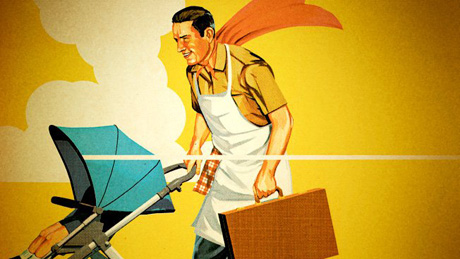WHAT MEN REALLY WANT
Father’s Day has come and gone, but, hopefully, not too long ago to allow you to regurgitate a memory of the advertising and editorial surrounding it.
As I watched it blow past in realtime, I was struck by this thought: Men are still enigmatic — even to the people who know them best — their wives and children.
Clearly, it’s not just single women who wonder, “What do men want?”
Hollywood, practiced at predicting tastes, long believed men wouldn’t see an action movie with a female lead, only to be forced to rethink this by the success of films like “The Hunger Games” and “The Girl with the Dragon Tattoo.” Network television has had its recent misses, too. Take the triplet of new shows that blipped on and off the radar — “Man Up!,” “How to Be a Gentleman,” and “Work It.” While not targeted specifically to guys, their depiction of men was so vapid, the shows turned off just about anyone who tuned in.
Men are tough to pin down right now. A moving target is hard to hit, and guys, particularly fathers, are in motion.
The number of stay-at-home dads has more than doubled over a 10-year period.
Almost 9 in 10 dads indicate they are spending more time actively engaged with their kids than their own fathers did with them. Men are increasingly in the role of primary decision maker for consumer goods purchases; more than one study even finds them doing more than half of household grocery shopping.
And, with shifting roles come shifting values and new ideas about what’s valuable from a brand. Here are a few things worth some thought:
One Size Doesn’t Fit All
One industry pub devoted the cover story of its Father’s Day issue to advertising’s pendulum swing from the “Doofus Dad” to “Super Dad.” It made the point that most dads are neither. What guys want is for advertisers to recognize this, just as dads (and moms) recognize stereotypes. And, it’s not just creative messaging that needs to be evaluated; new roles mean men are consuming content in new dayparts and new programming. While sports may still be the place for achieving mass reach, messages for certain categories can find more relevant homes.
Elastic Masculinity
There are times where guys are men’s men, and there are times when they’re, well, not so much. Men are negotiating a balance between personal values and societal views of masculinity. It’s not just in their domestic roles, either. Last year, global skin care sales to men rose 17%, and men accounted for 9%, the highest ever, of all elective plastic surgeries. There’s an inherent tension between the way men feel and behave, and what they think society expects of them. It’s real. And guys will enjoy the humor in it when it’s handled respectfully.
Enduring Truths
Thank goodness, there are still things that seem hard-wired. Men are more concrete, more linear, and more solution-focused. They don’t enjoy the decision process as much as their female counterparts. Their satisfaction is still in the consummation, and shopping is a tactical strike.
For marketers, this presents some opportunities, particularly in the area of digital. Think about how your brand can expedite the decision process, getting guys’ answers faster and persuading with information. After all, men are digitally enabled shoppers. Seventy-two percent check prices online, and 56% read online reviews. Those numbers are significantly higher for key categories, like automotive, exercise and, yes, food/cooking.
Net: The state of men is in flux and is likely to remain that way for some time. As men forge new roles, advertisers need to be in touch with their target and understand where, on the wide spectrum of masculine behavior, they fall as it relates to the category. We’ve come a long way, dude.
Written by: Steve Smith

